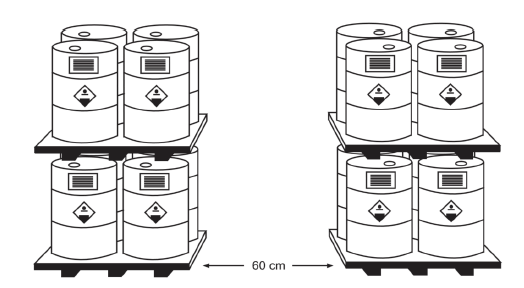The Regulation of the Minister of Environment and Forestry No. 12 of 2020 on the storage of hazardous waste (B3 waste) (hereinafter referred to as the Regulation) was enacted in Indonesia on June 5, 2020. The regulation provides the detailed storage requirements (locations, methods, and duration) of B3 waste that must be complied with by all parties involved with B3 waste activities (e.g., generators, collectors, and processors). This regulation came into effect immediately upon enactment, but it provided a six-month grace period to allow the parties sufficient time to comply. With the effective date of this regulation, the following three past regulations shall become invalid.
- the Decree of the Head of Environmental Management No. 1 of 1995 on procedures and technical requirements for storage and collection of B3 waste (Kep-01/BAPEDAL/09/1995)
- the Decree of the Head of Environmental Management No. 255 of 1996 on procedures and requirements for storage and collection of used lubricating oil
- the Regulation of the Minister of Environment No. 30 of 2009 on procedures for licensing and supervision of B3 waste Management due to B3 waste pollution.
The original text of this regulation is downloadable at the following URL:
http://jdih.menlhk.co.id/uploads/files/P_12_2020_PENYIMPANAN_LIMBAH_B3_menlhk_06262020092441.pdf
Storage locations
The storage requirements for B3 waste consist of the following three items:
-
- Storage locations
- Emergency response equipment
- Storage facilities
“storage facilities” from the above items are classified into the following five types, including detailed requirements:
-
- Building
- Tanks and/or containers
- Silo
- Waste deposit sites, and/or
- Waste impoundment
Storage facilities are needed to install fire detection systems and fire extinguishers as “emergency response equipment.”
Storage methods
As a method of storage, the following packaging is required to store B3 waste in a building.
- Drum
- Giant bag
- Intermediate bulk container tank, and/or
- Container
Each storage method provides additional requirements in detail. For example, if the drum storage is adopted,
- Keep a distance of at least 1 m below the ceiling.
- Leave adequate space of at least 60 cm between each block of drums to allow workers and forklifts to move. (See the figure below. Show in Annex 2 of this regulation.)

Storage duration
A generator may store B3 waste for a maximum period of time as follows.
- If more than 50 kg of B3 waste is generated per day, 90 days after it is discharged.
- For Category 1 B3 waste, if the daily discharge amount is less than 50kg, 180 days from the date of discharge.
- For Category 2 B3 waste from unspecified sources and general specified sources, if less than 50 kg of B3 wastes is generated per day, 365 days from the date of discharge, or
- For Category 2 B3 waste from specified sources, 365 days from the date of discharge.
In addition, a generator is required to undertake regular monitoring, record keeping and report to the authorities to ensure that B3 waste is properly stored.
 B3 waste storage rules fully revised in Indonesia
B3 waste storage rules fully revised in Indonesia 

























